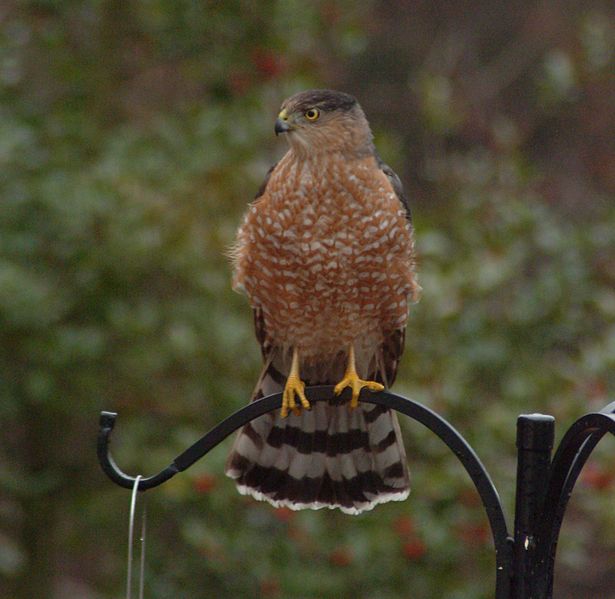E-mail: jalbert@ou.edu
Course information
Exams
Exam 1: Tuesday, June 7
Exam 2: Wednesday, June 22
Exam 3: Friday, July 8
Homework
Sometimes I post an assignment in advance but change it in
class the day before it's due.
If you miss a class you should check this web page after class for
the final version of the next day's assignment.
Assignment |
Due Date |
Problems |
| 1 |
Tuesday, May 17 |
2.1.15, 2.1.16(c,d) (here is a scan of
the homework problems, in case you haven't found a textbook yet.)
|
| 2 |
Wednesday, May 18 |
1.2.13, 1.2.14; 2.1.18 (Problems 1.2.13 and 1.2.14 can be found on this scan,
and problem 2.1.18 here.) |
| 3 |
Monday, May 23 |
2.2.3, 2.2.5 |
| 4 |
Wednesday, May 25 |
2.3.1, 2.3.2, 2.3.3 |
| 5 |
Friday, May 25 |
2.3.11, 2.4.5 |
| 6 |
Tuesday, May 31 |
2.4.1, 3.1.3(a,d) |
| 7 |
Wednesday, June 1 |
3.1.5(a) |
| 8 |
Thursday, June 2 |
3.1.13, 3.1.16, 3.1.17 |
| 9 |
Friday, June 3 |
3.2.1(a,b,d), 3.2.5(a) |
| 10 |
Monday, June 6 |
3.2.9 |
| 11 |
Thursday, June 9 |
3.2.14(a), 3.2.15, 3.3.1 |
| 12 |
Friday, June 10 |
3.3.3, 3.3.10 |
| 13 |
Monday, June 13 |
3.4.7(a,b) |
| 14 |
Tuesday, June 14 |
3.4.12 |
| 15 |
Wednesday, June 15 |
3.6.3 |
| 16 |
Thursday, June 16 |
3.4.14 |
| 17 |
Friday, June 17 |
3.7.6(a,b) |
| 18 |
Monday, June 20 |
4.1.3 |
| 19 |
Tuesday, June 21 |
4.1.9(a) |
| 20 |
Friday, June 23 |
4.1.15 |
| 21 |
Monday, June 27 |
4.2.11(a,b), 5.1.11 |
| 22 |
Tuesday, June 28 |
5.1.12, 5.1.13 |
| 23 |
Wednesday, June 29 |
4.2.12, 5.2.12 |
| 24 |
Thursday, June 30 |
5.2.8 |
| 25 |
Friday, June 31 |
6.1.1(a), 6.1.2 |
| 26 |
Tuesday, July 5 |
6.1.12 |
| 27 |
Wednesday, July 6 |
6.2.6, 6.2.7 |
References and Links
Here is a cleaned-up version of the proof which I gave in class of Theorem 6.2.1.
(If you compare with the proof given in the text, you'll see that the text's version is much shorter. This is not because the
proof in the text is any different; it's just because the text left out the details which I put in the longer version, in the
expectation that readers can supply the details for themselves if they feel like it. One of the things which you have
to take into account in writing up a mathematical proof is the balance between readability and detail: too many details
and the proof becomes hard to read and understand, too few details and it becomes difficult for readers to fill in the gaps.)
In class we mentioned that there do exist additive functions which are not linear, but that they are very crazy functions. That is, if you put
any kind of an extra assumption on an additive function saying that it is in any way "reasonable" (for example, that it is continuous, or that it has
a limit at some point), then it must be a linear function. Here is another result along those lines, with a simpler proof than the one given in class:
http://math.ou.edu/~jalbert/courses/additive_functions_2.pdf . It is due to G. S. Young.
For a comprehensive history of what has been proved about additive functions and their generalizations, see the last three pages of
this paper by Green and Gustin.
Here is a link to
an article containing fourteen proofs of the fact that the series generated by 1/n^2 has sum pi^2/6.
Here are a couple of handouts on topics that have come up in class.
You can consult these links
for more information on analysis and the foundations of mathematics.
M.I.T. Open Courseware: ocw.mit.edu. Click on "Mathematics" and then
"Analysis I, Fall 2006".
Wikipedia entry for "set theory": en.wikipedia.org/wiki/Set_theory.
There are many interesting articles on set theory and foundations of mathematics at the online Stanford Encyclopedia
of Philosophy.
"A Primer for Logic and Proof", by H. P. Hirst and J. L. Hirst: www.mathsci.appstate.edu/~jlh/primer/hirst.pdf.
The website "Intro to Logic" by Ian Barland et al. contains a course on logic, and in particular a discussion of the proper use of quantifiers such as "for every" and "there exists". In our analysis course, we don't delve too much into the details of the rules of logic,
and rely on our common sense to tell us whether a proof or argument is logically correct. But when you have to explain to
someone else what you think is wrong with their proof, it's sometimes difficult: everybody has common sense, but not everybody can explain common
sense to others. Courses in logic such as this one aim at making "common sense" rules explicit, so you can communicate with others about them.
Here is a site where fundamental theorems in many fields of mathematics are proved in complete detail, with proofs that are
verifiable (and have been verified) by computer: us.metamath.org.
"Understanding Analysis", a textbook by Stephen Abbott.
"Analysis, Vol. 1", a textbook by Terence Tao.
The founder of the subject of analysis, as we learn it in this class, was the French mathematician
Augustin-Louis Cauchy (1789-1857). Here is a nice article
about what Cauchy did, and why.
